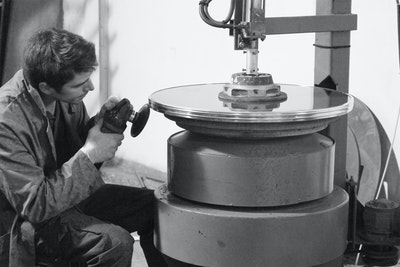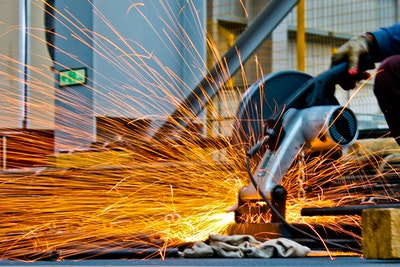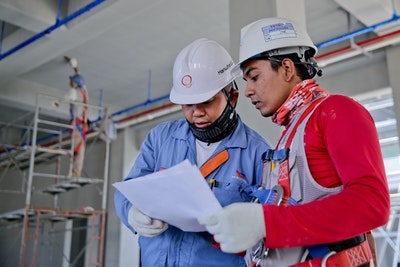Top 5 Benefits of Using Chemical Etching to Manufacture Precision Metal Parts

In this article, we’ll take a look at exactly what chemical etching is and some of the benefits it offers over other cutting/ etching techniques.
We’ll take a look at some of the general applications and a bit of information on the process before we investigate chemical etching’s benefits.
As the need for micro metal parts grows, the demand requires that the manufacturing methods be as precise and repeatable as possible.
This is where chemical etching comes in as it’s such an efficient manufacturing process that means it can service even the strictest demands from a number of different industries. At Tecan for example, we’ve serviced aerospace, automotive, medical, electronics, and communications to name just a few.
There’s a whole host of reasons that chemical etching is beneficial but it’s ultimately thanks to the very nature of its process which means it can provide exact made-to-measure results on an industrial scale.
It’s a reductive process whereby a chemical etchant is sprayed across an entire sheet of metal, the etchant then dissolves away the unwanted metal while the desired shape or stencil is retained thanks to a sprayed-on photo-resist which protects the desired parts of the metal.
Items like speaker grilles, filters, bipolar fuel cell plates, and many more are all created by chemical etching thanks to its absolute precision and maintaining the structure and integrity of the metals.
1 – Affordable
I briefly outlined the main principles behind the chemical etching technique and thanks to the efficiency of the process that means we’re able to keep costs down.
This etching process leaves the metal parts practically ready to be used immediately while many other processes may require some post-production, tidying edges, or burrs.
Chemical etching is stress and burr-free manufacturing method which means that overall production times are greatly reduced when compared to other methods.
Another key factor that influences the pricing is the simple fact that it’s possible to move from prototyping to industrial-scale quantities within very short spaces of time.
Any alterations are done quickly thanks to the stencils and shapes all being done on CAD software which means that any amends can be completed with precision on the computer and then put into the etching process immediately.
2 – Efficient
This is really at the core of the chemical etching process and the part that influences every other benefit in this list. As mentioned in the above topic, the efficiency of chemical etching enables us to achieve absolutely precise results without any loss of ductility, integrity, or structure of the metals we use.
It’s for this reason that a lot of electrical industries choose chemical etching over other options because the metals are untampered which is essential for many types of electronic microwave and radio frequency components.
Other etching techniques can warp or in some way affect the metals’ structure as they use very high-energy processes. The etchant, as previously mentioned, only acts on specific parts of the metal which is thanks to the photoresist lacquer that’s applied to preserve certain parts of the metal.
3 – Complexity of Design
This, as you might imagine, is again thanks to the designs and stencils being done on computer software which means that we can create full digital reproductions and then actually make them within days and sometimes even hours.
In terms of precision, the etching process is capable of achieving measurements as small as 25 μm which means there’s plenty of scope for micro precision parts that feature in a variety of appliances.
Another great feature of being able to create complex designs on computers is that there’s no expensive re-tooling or adjusting of the manufacturing equipment. The design is sent to the machine which applies it to the sheet metal so that no time is wasted.
4 – Untampered Metals
It’s once again thanks to chemical etching’s streamlined process which means that throughout the manufacturing, the metals’ structures are unchanged.
The efficiency of the etchant is thanks to a carefully formulated and designed chemical process that is completely controlled. Being a subtractive method via chemicals means that the final results are perfectly formed without any need to “tidy up” or apply post-production to fix minor errors.
Another advantage of this process is that it leaves a clean and smooth surface which are the ideal conditions for electronic mating components.
This is precisely why certain industries choose chemical etching: because it’s able to efficiently achieve absolute precision, low tolerances, exact shapes and sizes, and all with high conductivity.
Some examples of these components include EMI/RF shielding and terminals as well as electrical contacts.
5 – Quick Lead Times
Comparatively speaking, the chemical etching process is very quick; as it’s all done via chemicals that are sprayed onto the sheets of metal, it can all be done concurrently.
While other manufacturing techniques have to apply the tool one at a time, a laser or water jet for instance (even if multiple are acting this adds up in the total cost), chemical etching is all done at once.
It’s sprayed on across the metals and gets to work which translates to greatly reduced lead times as the entire process is done at once, rather than staggered because of limitations to tool numbers.





